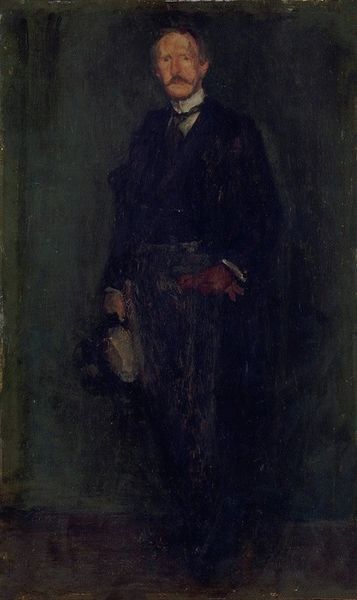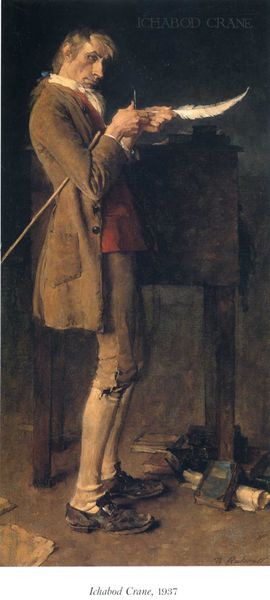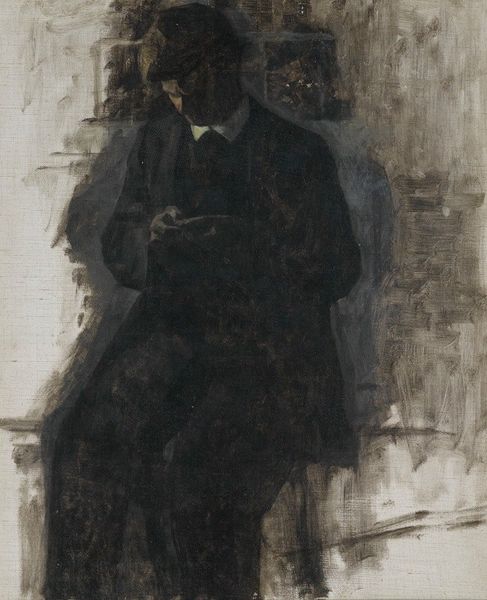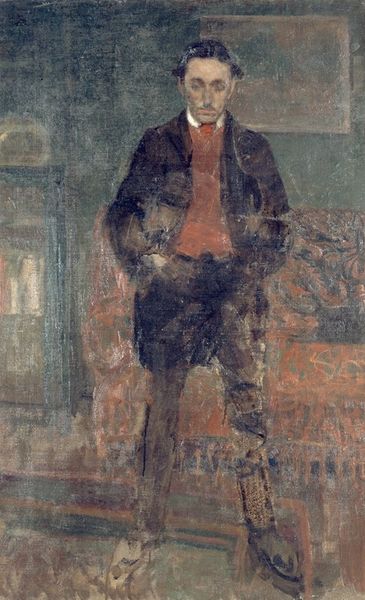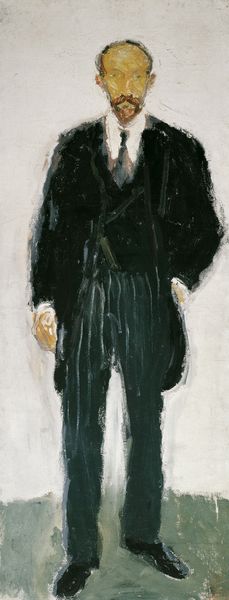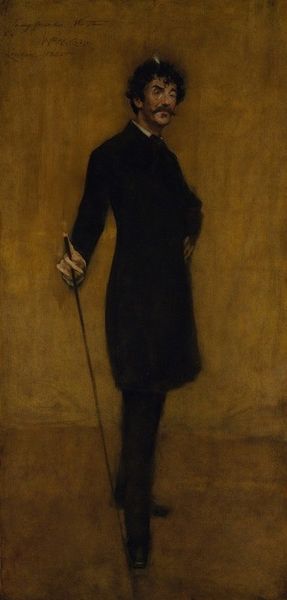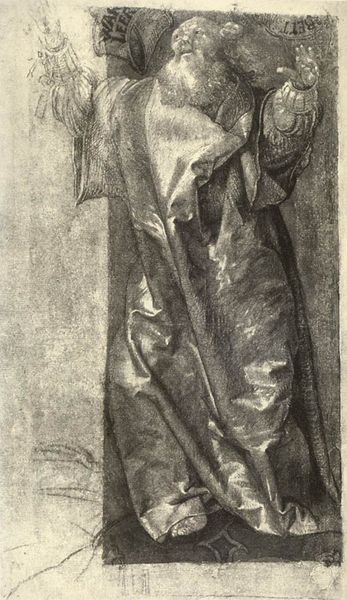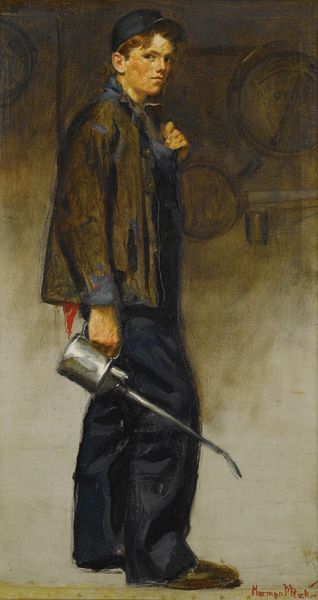
Arrangement in Black, No. 3, Sir Henry Irving as Philip II of Spain 1876
0:00
0:00
painting, oil-paint
#
portrait
#
figurative
#
painting
#
oil-paint
#
figuration
#
oil painting
#
history-painting
#
academic-art
#
realism
Copyright: Public Domain: Artvee
Curator: Stepping closer to James Abbott McNeill Whistler’s "Arrangement in Black, No. 3, Sir Henry Irving as Philip II of Spain", painted in 1876, I'm immediately struck by the controlled palette and dramatic lighting. The figure almost seems to emerge from the darkness. Editor: There is a powerful, somber feeling—the severe dark colors set the stage for the drama embodied by this figure. The face almost seems mask-like with hidden stories behind it. I'd be interested to examine his posture. What might it be trying to say about identity, or perhaps politics, in this time? Curator: This painting is indeed full of layers. Whistler was interested in more than a simple portrait. It represents actor Henry Irving in the role of Philip II, King of Spain. Irving’s interpretation of Philip was revolutionary—and that’s precisely what Whistler wanted to capture. Editor: That’s compelling. In this context, we could examine Philip II as a historical archetype: the burden of power, isolation... these symbols persist throughout history. He carries this very solid book almost like a weapon or at least a defense, yes? Curator: Precisely, but more than that, consider this: How often are historical figures viewed through performance? What we think we know of historical power often comes from carefully constructed narratives, presented on stage and in literature. Editor: That speaks to the tension between reality and constructed image, so relevant to today. It challenges us to see how authority—both theatrical and real—relies on visual symbols and presentation, especially of masculinity. His black cape isn’t just fabric, but authority. Curator: Whistler uses very subdued tones, allowing only a few details to truly stand out, almost mirroring the way certain historical narratives amplify particular details to tell a specific story. Look at the intricate details of the King’s costume versus the very sketchy indication of other aspects, for example the legs, in contrast to the strong presence of his book, jewelry, and even that wispy feather! Editor: Thank you for expanding my understanding. Thinking about the long reverberations of symbols throughout history – a fresh viewing provides new opportunities for considering and reflecting on today’s culture and political symbols and those performing on our global stage. Curator: Absolutely. The image encourages us to explore this figure at a specific time but also in terms of a long lineage of representational authority.
Comments
No comments
Be the first to comment and join the conversation on the ultimate creative platform.
